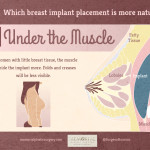Breast Size Shaming: Casting Light on a Form of Bullying

For many young women, small breasts can be a major point of shaming.
Understanding Bullying
Many bullied young women often internalized their alleged flaws. They may believe that if they change themselves, they could be free from persecution. But this is a false assumption. Changing oneself to appease others will only increase the bully’s influence and attention.
More often than not, bullying is not about flaws. It is about power. The feeling of dominance is the rush that many bullies chase. While not being a quick fix, educating the bullied person will empower them out of a victim mindset and help them overcome the bully’s control.
Interestingly, data suggests that the act of repeatedly harassing and tormenting others can leave long-term, detrimental effects on bullies themselves. Research associated with bullying found that early adaption of abusive behavior at a young age could potentially lead to poor functioning later on in life.
The data shows that bullying is a precursor not only for increased aggression but even propensity to become a criminal. Thus, the act of bullying isn’t just bad for the victims, but it’s also detrimental to bullies – who eventually use threats and coercion not just in the workplace but in their personal relationships as well.
Social Media Has Become Hazardous to Health
The social shaming of women for their breast size is often related to the bigger umbrella of shaming women. In Nathaniel Hawthorne’s The Scarlet Letter, Hester Prynne wore the letter “A” on her chest – a legal way to shame her for her adultery in the 1850s. These days the scarlet letter isn’t restricted to a pinned and visible “A” on a young woman’s chest. In fact, it does not even have to be physical anymore. Bullies today have taken to social media and the internet as a medium of judging as well as dishing out harassment and insults.
Shaming teens can often have tragic consequences. In 2017, 10-year-old Ashwanty Davis committed suicide in her Colorado home after receiving hurtful posts for weeks. A few weeks later in California, 13-year-old Rosalie Avila also committed suicide after sustained bullying and gossip. Cora Delille of Ohio, a bright and pretty 15-year-old student, killed herself in exactly the same way. These girls were bullied at school over things as innocent as braces.
Unfortunately, these are not isolated incidents and bullying has truly adverse effects and tragic effects. In our society women fall victim to bullying more than men do. The National Center for Educational Statistics in 2016 reported that females receive a slightly higher prevalence of verbal insults and attacks than male students, at 23% for women versus 19% for the boys – who are more vulnerable to physical harm and abuse.
Celebrities Aren’t Exempted
Celebrities, just like ordinary girls, have been the target of breast shaming. Even Hollywood actresses are not immune to the stigma that breast size is somehow a marker of self-worth and femininity.
Just recently, Academy Award-winning actress, Alicia Vikander, received backlash for the size of her breasts after having been cast as Lara Croft in 2018’s Tomb Raider. A popular video game franchise, Tomb Raider’s lead character, Lara Croft, has been regarded as a sex symbol for the last twenty years. Once known for her iconic triangular bust, Lara Croft now sports a lean, healthy, and completely natural body shape. Despite the fact that video game developers have adapted Lara Croft’s body over to accommodate realistic proportions, commenters on Reddit and Twitter have gone out of their way to body shame Alicia Vikander.
“Do I have to be the a****** who says her tits are too small for me to see her as Lara Croft?” went one troll post, comparing Vikander’s 34A cup to Angelina Jolie’s 34C.
Another actress who has received substantial body shaming throughout her career is Kiera Knightley. In a 2012 cover shoot for Allure Magazine, Knightley opened up about her struggles with body issues after years of having been targeted by sensational tabloids, or by touch-ups that enhanced her bust size for movie posters.
“I knew I wasn’t anorexic. But maybe my body is somehow not right. Or my face is not right. Or the way I speak is not right,” Knightley told Allure. “When you’re going through a period where you’re really getting a lot of criticism, you go, maybe all this is right! You just kind of want to hide it all.”
Standing Up and Reclaiming Your Body
For the victims of harassment, there are only two ways to stop bullying: stand up or back down. The act of standing up is an unexpected act. It surprises the tormentor and shows that the victim is firm, confident, and unaffected and undaunted by any of the harassment. For bullies, this can be a very powerful change in the intentions towards their target.
Simply put, changing your body just to put an end to harassment takes power away from you. No amount of self-adaptation or even plastic surgery can make you feel better about yourself. True beauty comes from the inside out. Cosmetic surgery is only an option when you desire to enhance the natural features of your body for yourself, not others. Often, the first step simply starts by loving yourself.
As a board-certified plastic surgeon in Houston, one of the most important parts of my job is to understand the needs of every woman or man who steps into my office. Some women have lost their breasts to cancer, and others simply wish to wear better fitting clothes or improve the contour of their bodies. Most importantly, women undergo these procedures for themselves and not for anybody else.
For women seeking to change their bodies due to constant harassment, it is important to remember that the stigma surrounding the flaw is only powerful if you let it get under your skin. When considering any form of cosmetic enhancement, it is important to make a decision with a clear mind. The changes from undergoing breast augmentation and other plastic surgery procedures can be life-changing and satisfying when done for the right reasons.
*This blog is created and maintained for informational purposes only. The images present may not accurately reflect actual cases per individual. Individual cases are unique, and the descriptions and solutions will vary per patient.





















